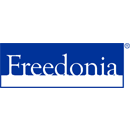News / Business
US Demand for Refractories to Reach $2.6 Billion in 2016

US demand for refractories is projected to grow 3.3 percent per year to $2.6 billion in 2016. Output of steel in the US will grow following a period of decline, driving demand for refractories. Gains will also come as nonresidential fixed investment spending returns to strong growth through 2016, prompting a resurgence in the manufacture of goods such as ceramics and glass. These and other trends, including market share and product segmentation, are presented in US Refractories, a new study from The Freedonia Group, Inc., a Cleveland-based industry market research firm.
In 2011, sales of refractories to iron and steel manufacturers totaled $990 million, making up 45 percent of all refractory sales. Following a decline in steel output caused by the most recent recession, steel manufacturing in the US -- and associated refractory demand -- will rise through 2016. A shift in consumption toward higher-priced, advanced refractories will bolster sales value. However, the development of longer lasting, more durable refractories will limit demand going forward. Most materials manufacturing industries have reduced their per-production-unit consumption of refractories by using these newer, more durable products and improved processes.The fastest gains of any market in dollar terms will be posted by nonmetallic minerals. This market includes ceramics, glass, and cement producers. Output from these industries will rebound as the US economy continues to grow, fueling related refractory demand. Further growth will come from nonmanufacturing markets for refractories -- such as waste-to-energy plants, traditional power plants, and commercial ovens -- although these are all fairly small markets. The largest sales volume increases will be in the engineering contractors market, which will rise more than 50,000 tons between 2011 and 2016, recovering from declines posted during the 2006-2011 period.
In value terms, market gains for refractories will be led by monolithic refractories and specialized shapes. The performance of monolithic refractories has improved greatly, boosting sales of these forms. Technological advancements have also made specialty shapes more cost effective and efficient, bolstering demand for those products. Buyers are increasingly choosing more expensive high grade refractories, which are formulated to perform well under specific operating conditions. As a result, demand for nonclay refractories in tons will outstrip that for clay refractories due to the better performance offered by nonclay types. However, sales of clay refractories will shift toward higher grades, spurring value gains such that demand for clay types (in dollar terms) will rise at a faster pace than sales of nonclay refractories.
The Freedonia Group is a leading international business research company, founded in 1985, that publishes more than 100 industry research studies annually. This industry analysis provides an unbiased outlook and a reliable assessment of an industry and includes product segmentation and demand forecasts, industry trends, demand history, threats and opportunities, competitive strategies, market share determinations and company profiles.
